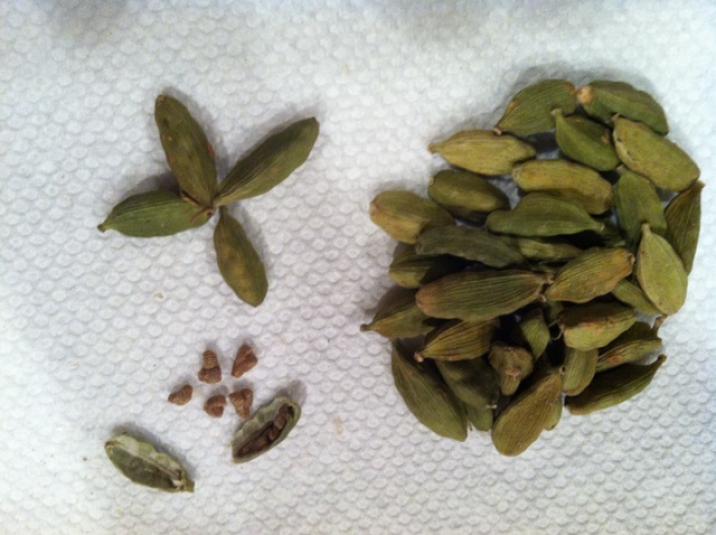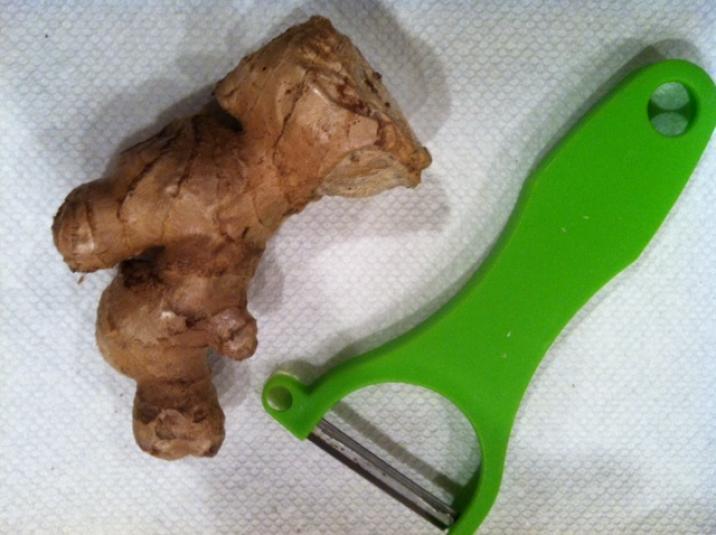Written by Marsha Seidelman, M.D.
June 27, 2013
Add some more SPICE – cardamom and ginger – to your recipes
featuring Teriyaki Flank Steak and Mashed Sweet Potatoes and Pears
In the first spice article, we were roaming through the spice market in Istanbul. When we were there, we learned how to choose ‘true’ cardamom pods, which are actually from India. They should be green rather than the tan ones we can buy here in the supermarket spice section – and plumper rather than dehydrated.
Referring again to Dr. Bharat Aggarwal’s book, Healing Spices, we learn that cardamom has been used for centuries for soothing the stomach, relaxing muscles, preventing heart attacks and strokes, relaxing the airways in asthma and treating sinus infections. The many oils that are contained in the spice are powerful anti-inflammatory and anti-spasmodic agents that help these ills. Chewing on the tiny seeds inside can also eliminate bad breath. The author refers to it as, “Mother Nature’s tooth brush… it is one of the few substances that will help you dissipate ‘garlic breath.’ ” It’s an acquired taste, but I must say I like it. It can be used in everything from curries to rice biryani dishes to desserts.
You can just peel open the pod and chew on the seeds. To experience the taste less intensely, pour hot water over a pod or put the seeds into hot water with tea or coffee; they soften and then you can eat them … or just taste the cardamom in the beverage and discard the seeds. You can add ‘bruised’ pods to the liquid when making rice – just crush the pod with the flat part of a knife. See the sweet potato recipe below for another great idea! A very simple way to include cardamom in your food is to use garam masala on baked chicken or tofu. It’s a blend of black pepper, cardamom, cinnamon, cloves, cumin and coriander.
Now on to ginger – it’s one of my husband’s favorite spices, so we use loads of it – sliced, grated, pickled, you name it! Chinese healers have used ginger for nausea, motion sickness, diarrhea and arthritis. It is possible that it could help treat nausea in pregnancy and after chemotherapy. It also has anti-inflammatory and possibly tumor suppression properties. As a result, ginger extract has been used to treat arthritis and is being examined in cancer research. It may help migraines and asthma symptoms.
It’s great added to stir fry dishes. You may have tasted it in ginger ale or ginger beer, or adding a pickled version to sushi. Some of you might recognize its taste when mixed with rum in a Dark and Stormy. It can cover the odor of fish. I had a great dish in a restaurant last week – branzino fish cooked with sun dried tomatoes and ginger. I’d love to try to re-create that recipe.
Officially, ginger as we see it in the store, is the underground stem, not the root of a plant. It is called a ‘hand’ for obvious reasons – it looks like a tan, knobby collection of fingers. Since I usually grate it into foods, I try to choose ‘hands’ that have thicker areas with fewer spikes, so that it’s easier to peel and use, without having to peel into the nooks and crannies. It stays good in the refrigerator for up to a week or so. One suggestion in the spice book is to grate it over cooked tofu. Below, you’ll find a recipe for flank steak in a teriyaki ginger marinade – the only meat dish I prepare at home.
To get all the potential health benefits of these spices, you would have to consume a tremendous amount. Although some of the spices are available in pill form, I generally don’t encourage their use. I do, however, favor cooking with them as much as possible – both for the taste and the potential extras you can derive.
Now for two of my favorite recipes – flank steak and sweet potato and pears with cardamom. Both have more sugar than I’m used to cooking with, but sometimes it’s worth it.
MAIN DISH:
TERIYAKI FLANK STEAK – adapted from The Washington Post
The key to this is the sake which makes the meat incredibly tender!
Ingredients:
1/4 cup lite soy sauce
1/4 cup sake or dry sherry (I prefer Haiku brand Sake)
2 Tbsp brown sugar
3 cloves garlic, minced
2 Tbsp grated ginger root
2 Tbsp peanut oil
1 1/4 pounds flank steak
Directions:
1) In a medium bowl, combine the soy sauce, sake, sugar, garlic, ginger and oil. Place the steak in a large shallow dish, add the marinade and turn to coat. Cover and refrigerate, preferably for at least 8 hours, turning occasionally.
2) Preheat the grill or broiler. Remove the steak from the refrigerator 15 minutes before grilling.
3) Transfer the steak to a plate, discarding the marinade. Cook, turning once, to the desired degree of doneness, 4-5 minutes per side for medium. Transfer to a platter and cover loosely with foil; set aside for 5 minutes.
4) Carve on the diagonal, against the grain, into 1/4″ thick slices.
4 servings at 194 calories per serving — if you can stick to that serving size! That includes all the marinade ingredients, which aren’t actually all consumed.
SIDE DISH:
MASHED SWEET POTATOES AND PEARS
From Bon Appetit; November 1994
If you’re watching calories, use decreased amounts of butter, nectar and sugar. Also, you can use this as a healthy version of dessert.
Ingredients:
5 lbs red-skinned sweet potatoes (yams)
4-6 Tbsp unsalted butter, room temperature
4 large firm but ripe Bartlett pears, peeled, cored, cut into 1/3 inch-thick slices
1/2 – 3/4 cup pear nectar
2-4 Tbsp sugar
½ tsp ground cinnamon
¼ tsp (generous) ground cardamom
Directions:
1) Preheat oven to 400. Butter 13x9x2-inch glass baking dish. Pierce potatoes in several places with fork. Place on baking sheet; bake until very tender when pierced with knife, about 1 hour. Remove from oven. Reduce temperature to 350.
2) Meanwhile, melt 1-2 Tbsp butter in heavy large non-stick skillet over medium-high heat. Add pears; sauté until beginning to soften, about 5 minutes. Add ¾ cup nectar; bring to simmer. Reduce heat to medium-low; cover and simmer until pears are very tender, adding more nectar if mixture sticks to skillet and stirring often, about 4 minutes. Transfer to processor and puree.
3) Peel sweet potatoes; place in large bowl of electric mixer. Add 2-4 Tbsp butter; beat until smooth. Mix in pear puree, sugar, cinnamon and cardamom. Season with salt and pepper. Transfer to prepared dish (Can be prepared 1 day ahead – if so, cover and chill.)
4) Bake potatoes uncovered until just heated through, about 20 minutes.
Other variations I’ve tried include using rosemary instead of cardamom, or a banana instead of one
of the pears.
Serves 8 at about 220 – 260 calories per serving – depending on quantity of nectar, sugar and butter.
Bon appétit!!
I’d love to hear your comments on these recipes! Stay tuned for enjoying the path to good health with tomatoes, onions and garlic. Then you can use the cardamom to cure the garlic aftertaste!
Tags:


